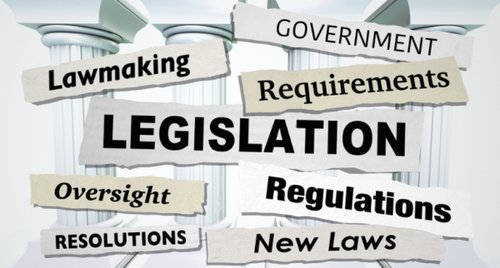Credit cards typically don’t have one APR. You can incur one APR for purchases, while triggering a different one if you take a cash advance. If you face the unfortunate situation of missed payments or exceeding your credit limit you may activate a penalty APR, making repaying indebtedness burdensome. Here’s what you need to know about penalty APR and how to prevent it from derailing your financial progress
How do penalty APRs work?
A credit card company can enforce a penalty APR once you’re at least 60 days late on a payment. By law, the rate can reach a maximum rate of 29.99%. The current average interest rate is 24.30%, according to the most recent CardRatings credit card interest rate survey, so the penalty is markedly higher.
Simply missing a payment won’t trigger the penalty; it must be 60 days past due. Furthermore, federal law requires that credit card issuers provide cardholders with a 45-day notice before raising rates, so it’s fair to expect a 105-day lag time before the heightened rate is reflected on your account.
Other actions, such as a payment returning with insufficient funds or exceeding your credit limit, can trigger the higher rate. Worse yet, getting hit with a credit card penalty APR can eliminate promotional 0% APR offers, balance transfers, and rewards.
Each credit card company communicates what activates the rate on statements in the Schumer Box, which outlines its rates and fees.
How long does a penalty APR last?
Fortunately, credit card penalty APRs do not last forever. If you return to making on-time payments, the higher rate may only be on your account for six months, thanks to the CARD Act of 2009. This act obligates the issuing bank to review accounts once cardholders make six consecutive timely minimum payments.
That’s the best-case scenario. The penalty APR can stay indefinitely if payments continue to be missed or you exceed the credit limit. Returning to wise practices with your credit card is the quickest way to return to a regular APR.
How to avoid penalty APR – 5 strategies
Avoiding a credit card penalty APR is fairly straightforward. Responsible usage is the best way to avert the higher rate. These are some simple ways to dodge the penalty.
- Make timely payments: Missing a payment for 60 days is a sure way to trigger the fee. If you feel you’re going to have a late payment, call the bank to see what they can do to help.
- Make the minimum payment: While sending in something feels good, the payment must meet the minimum amount required. If it’s not, let the credit card company know beforehand.
- Establish autopay: Most issuing banks allow cardholders to create autopay to ensure timely payments. If your finances allow for it, this can be a great way to avoid penalties and fees.
- Create calendar reminders: Life gets busy, and it’s easy to forget to make a payment. Set reminders for a week before payments are due so you don’t errantly miss a payment.
- Have sufficient funds in your bank account: Returned payments can activate the penalty APR for some credit cards. Verifying your account balance before paying is the best way to protect against incurring the fee.
Ultimately, it’s best to consult your credit card statement to identify what exactly will help you avoid the penalty APR. Combine that with keeping a low balance on your card, and you can typically sleep well knowing the higher APR won’t impact your account.
What to do if you’ve already been hit with a penalty APR?
Every situation is different, and there’s not one foolproof way for managing a penalty APR. However, following some of these practices can set you on the right path.
Stop using the card: Continuing to use the card will only increase the balance, and at a higher interest rate.
Bring your account current: Making minimum, timely payments is essential to removing the penalty APR from your account. As soon as you’re able, pay the minimum required to bring it current.
Ask to remove it: There’s no harm in contacting the credit card company to ask if they will waive the penalty APR. Clearly communicate your circumstances and why you missed payments. If you have a good history with the bank, they may waive the rate, though it’s not a given.
Consider a balance transfer credit card: If you have overall good credit, a 0% balance transfer offer could potentially be a justifiable solution. You may pay a fee to transfer the balance, which may be lower than the penalty APR. It’s best to pursue this option only if you’re not going to use it to overspend.
If you’re dealing with substantial credit card debt, pursuing credit card debt forgiveness or some other debt relief programs may be necessary. Unfortunately, some solutions may create a taxable situation on the amount forgiven or further hurt your credit score. These may remove the penalty APR, but still hurt financially.
If possible, it’s best to pursue other efforts to get back on track after triggering the penalty APR.
Frequently asked questions about penalty APR
Dealing with credit card penalty APRs can be problematic. These are some common questions cardholders have when encountering the issue.
What triggers a penalty APR on a credit card?
The penalty APR is commonly from a straightforward problem. Missing payments, making less than a minimum payment, exceeding your credit limit, or having a payment returned are the key reasons for the increased rate.
Will a penalty APR affect my credit score?
No, the penalty APR doesn’t directly hurt your credit score. Although the reasons for the heightened APR can negatively impact your credit.
For example, payment history is 35% of your credit score. Missing payments will hurt your credit. Additionally, using too much of your credit, known as credit utilization ratio, comprises 30% of your credit. If you’re struggling with both, it’s fair to expect a lower credit score.
Do all credit cards have a penalty APR?
Not all credit cards have a penalty APR, though they’re more difficult to find. Possible cards to consider without a penalty APR include the Discover it(R) Cash Back and Citi Simplicity(R) Card. (Citi is a CardRatings advertiser.)
The bottom line
Incurring a penalty APR isn’t a foregone conclusion. Making on-time payments and not overextending yourself is a simple way to avoid the APR.
If you fear being hit with the raised APR, it may be wise to identify a credit card that doesn’t carry the fee. You may sacrifice other important features, though, so it’s important to consider the full picture when comparing credit cards.


